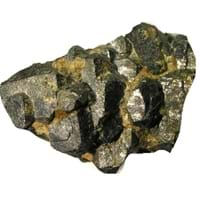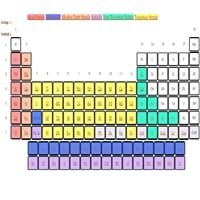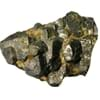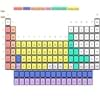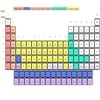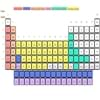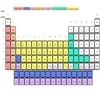Actinium vs Californium
Periodic Table
Symbol
Ac
Cf
Group Number
Not Available
Not Available
Period Number
7
7
Block
f block
f block
Element Family
Actinide
Actinide
CAS Number
7440348
99+
7440713
20
Space Group Name
Fm_ 3m
P63/mmc
Space Group Number
225.00
2
194.00
5
Facts
Interesting Facts
Not Available
- Californium metal is very harmful and highly radioactive.
- Californium metal is the heaviest metal.
Sources
Obtained by Treating Radium with Neutrons, Ores of metals
Made by Bombarding Curium with Helium Ions
History
Who Discovered
Friedrich Oskar Giesel
Lawrence Berkeley National Laboratory
Discovery
In 1902
In 1950
Abundance
Uses
Uses & Benefits
- Actinium metal has a great source of alpha rays but it is hardly used outside research purpose.
- Californium metal has a very strong neutron emitter. It is used as a metal detector.
- It also used as an identifier to check Water and oil layers in oil wells.
Industrial Uses
NA
Chemical Industry
Medical Uses
NA
NA
Other Uses
Alloys, Nuclear Research, Research Purposes
Alloys, Nuclear Research
Biological Properties
Toxicity
Toxic
Toxic
Present in Human Body
No
No
In Blood
0.00 Blood/mg dm-3
37
0.00 Blood/mg dm-3
37
In Bone
0.00 p.p.m.
36
0.00 p.p.m.
36
Physical Properties
Melting Point
1,227.00 °C
38
900.00 °C
99+
Boiling Point
3,200.00 °C
26
1,470.00 °C
99+
Appearance
Physical State
Solid
Solid
Color
Silvery White
Silver
Luster
NA
NA
Hardness
Mohs Hardness
Not Available
3.00
12
Speed of Sound
Not Available
Not Available
Optical Properties
Allotropes
No
No
α Allotropes
Not Available
Not Available
β Allotropes
Not Available
Not Available
γ Allotropes
Not Available
Not Available
Chemical Properties
Chemical Formula
Ac
Cf
Isotopes
Known Isotopes
29
10
20
19
Electronegativity
Pauling Electronegativity
1.10
99+
1.30
32
Allred Rochow Electronegativity
1.00
36
1.20
27
Electropositivity
Pauling Electropositivity
2.90
10
2.70
22
Ionization Energies
1st Energy Level
499.00 kJ/mol
99+
608.00 kJ/mol
99+
2nd Energy Level
1,170.00 kJ/mol
99+
1,206.00 kJ/mol
99+
3rd Energy Level
1,900.00 kJ/mol
99+
2,267.00 kJ/mol
99+
4th Energy Level
4,700.00 kJ/mol
23
3,599.00 kJ/mol
99+
Electrochemical Equivalent
2.82 g/amp-hr
18
3.12 g/amp-hr
15
Electron Work Function
Not Available
Not Available
Other Chemical Properties
Ionization, Radioactive Isotopes, Radioactivity, Solubility
Corrosion, Ionization, Radioactive Isotopes, Radioactivity, Solubility
Atomic Properties
Atomic Number
89
29
98
20
Electron Configuration
[Rn] 6d1 7s2
[Rn] 5f10 7s2
Crystal Structure
Face Centered Cubic (FCC)
Double Hexagonal Close Packed (DHCP)
Crystal Lattice
FCC-Crystal-Structure-of-Actinium.jpg#100
DHCP-Crystal-Structure-of-Californium.jpg#100
Atom
Number of Protons
89
29
98
20
Number of Neutrons
138
16
153
9
Number of Electrons
89
29
98
20
Radius of an Atom
Atomic Radius
195.00 pm
7
186.00 pm
9
Atomic Weight
227.00 amu
25
251.00 amu
17
Atomic Volume
22.54 cm3/mol
11
Not Available
Adjacent Atomic Numbers
Valence Electron Potential
38.60 (-eV)
99+
44.50 (-eV)
38
Lattice Constant
567.00 pm
8
338.00 pm
99+
Lattice Angles
π/2, π/2, π/2
π/2, π/2, 2 π/3
Lattice C/A Ratio
Not Available
Not Available
Mechanical Properties
Density
Density At Room Temperature
10.00 g/cm3
37
15.10 g/cm3
21
Tensile Strength
Not Available
Not Available
Viscosity
Not Available
Not Available
Vapor Pressure
Elasticity properties
Poisson Ratio
Not Available
Not Available
Other Mechanical Properties
NA
Malleable, Sectile
Magnetic Properties
Magnetic Characteristics
Specific Gravity
10.07
28
15.10
13
Magnetic Ordering
Paramagnetic
Paramagnetic
Electrical Properties
Thermal Properties
Specific Heat
0.12 J/(kg K)
40
Not Available
Molar Heat Capacity
27.20 J/mol·K
18
Not Available
Thermal Conductivity
12.00 W/m·K
99+
Not Available
Critical Temperature
Not Available
Not Available
Thermal Expansion
Not Available
Not Available
Enthalpy
Enthalpy of Atomization
301.00 kJ/mol
36
Not Available
Standard Molar Entropy
56.50 J/mol.K
25
Not Available
|
||
|
||
|
